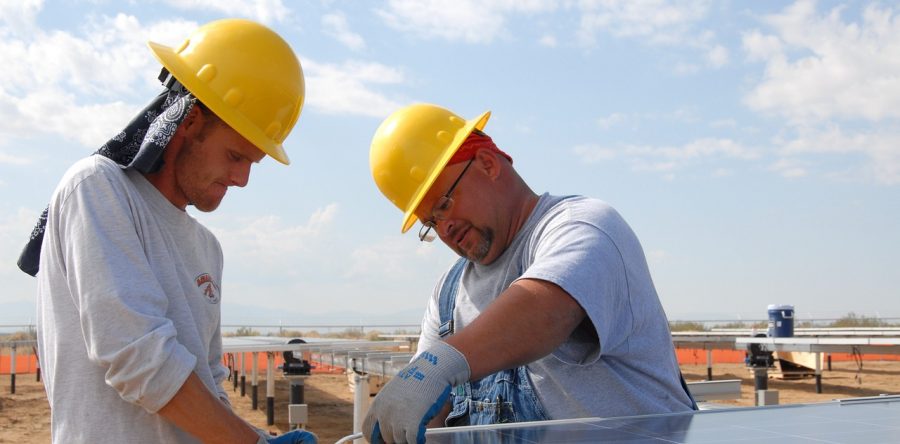Three steps to ensuring HSWA compliance by Nicola Middlemiss. Available from <http://www.hrmonline.co.nz/news/three-steps-to-ensuring-hswa-compliance-234083.aspx> [Mar 15, 2017]
It’s less than 12 months since the Health and Safety at Work Act came into play so it’s understandable that some employers will still have concerns – here, one industry expert offers his advice so HR can ensure compliance.
Terry Johnson, director of Simpson Grierson’s health and safety advisory services, told HRM that there are three areas employers should focus on if they want to achieve best practice – planning, reporting and identifying real risks.
Planning
According to Johnson, planning is one of the most important elements to ensuring compliance yet many organisations are still under-performing when it comes to preparation.
“There are a lot of organisations that I go and talk with and when I look at the way they’re doing planning, it’s a very cursory or thin level of planning,” says Johnson.
“That means a manager may have developed a safety plan, taken it to the committee which says it’s okay, then it sits there until the end of the year when they do a review and realise they haven’t actually done any of those things,” he explains.
“The other thing I see is companies that have improvement objectives, targets, policies and statements about wanting to reduce injuries or increase engagement but when you look at the plan there’s no particular link to the elements within a health and safety plan that’s going to deliver those objectives.”
In reality, Johnson says organisations need you need a thorough plan that’s been developed with the consultation of health and safety committees and front-line workers within an organisation.
“It must also have management input and should come together as a plan for the business which very clearly calls out how fulfilling this plan will deliver the objectives of the business – including the things that sit on the health and safety policy.”
According to Auckland-based Johnson, a thorough plan is one of the fundamental elements of any safety system as it determines the resources an organisation needs which is one of the obligations of directors.
“You also need to be able to review as you go through the year – around your progress, around health and safety – but if you haven’t got a plan how do you know if you’re getting better or worse?” he asks.
Reporting
“If planning is important then so is reporting,” stresses Johnson. “You need to give the right information to directors and your leadership team around health and safety and whatever you give them it’s almost equally as important to give the same information to your front line workers.”
Johnson says in order to create a culture that’s committed to workplace safety, leaders need to put trust in their employees and show them the real state of affairs.
“If you want your people to be more engaged in what you’re doing, if you want them to take accountability and responsibility, they’ve got to feel trusted yet a lot of organisations have all of their health and safety reporting going upwards and none of it goes downwards,” says Johnson.
“Then they wonder why people aren’t sure what’s going on from a health and safety perspective and aren’t actively engaged in the processes.”
Identifying real risks
“The third area is around the most significant risks in your business and how well companies really understand those risks that they’re exposed to as opposed to the hazards they may have to manage day to day,” says Johnson.
“If I’m a company that has sales reps out on the road then the most significant risk to those people is probably driving so how well have I got processes in place for managing that risk of driving versus there maybe being a hazard in my office with a bit of ripped carpet,” he explains.
“Okay, sure someone could trip and hurt themselves but it’s unlikely there’s going to be a fatality versus the driving risk that I put people under each day.”
Johnson says organisations often have passive hazard registers which go unattended year after year instead of creating a critical risk register which is monitored and controlled.
“If I go back to the driving analogy, what’s my process for knowing that all my sales reps have a current driving license and that their cars are being kept up to date from a warrant of fitness perspective?” he asks.
“Some organisations now go to the point where they say; ‘If I’m going to put people out on the road and I’m providing the vehicles then not only should they have a WOF and be mechanically safe but maybe they should be certain a standard in terms of crash protection and I’ll only buy 4-star NCAP rated cars.’
“Those are the sorts of obligations organisations really need to think about – what are those critical risks and how do we make sure people are protected from them?”
The upcoming Employment Law for HR Managers Masterclass will cover the recent reforms to the Health and Safety at Work Act while clarifying the obligations of officers and HR professionals. More information about the event - due to be held in both Wellington and Christchurch - can be found online.
Three steps to ensuring HSWA compliance by Nicola Middlemiss. Available from <http://www.hrmonline.co.nz/news/three-steps-to-ensuring-hswa-compliance-234083.aspx> [Mar 15, 2017]









